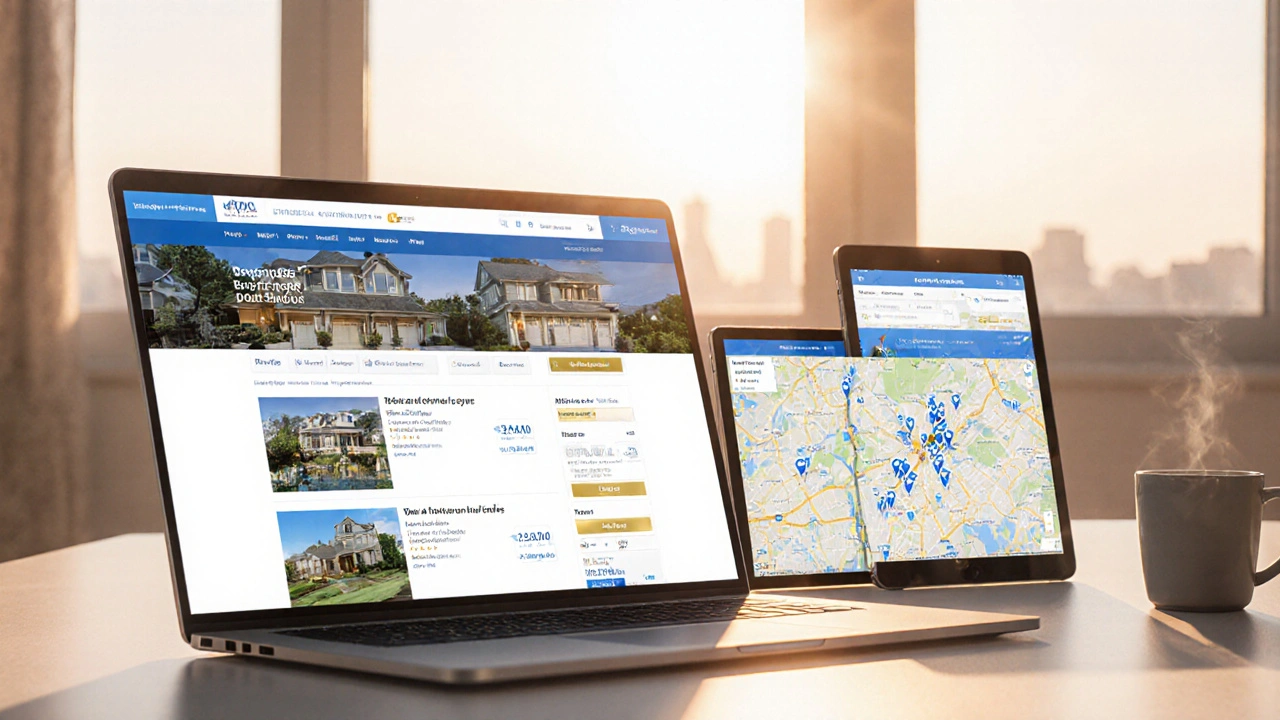Real Estate Website: Your Quick Guide to Finding Homes Online
Looking for a new house or an investment property? A good real estate website can cut hours of searching down to minutes. Instead of driving around random neighborhoods, you can see photos, price history, and nearby amenities with a few clicks. This guide shows you how to pick the right site, what tools to use, and how to avoid common pitfalls.
How to Choose the Right Real Estate Website
First, check the site’s coverage. Some portals focus on major metros, while others include tier‑2 and tier‑3 cities. If you’re eyeing Bangalore, make sure the site lists both luxury villas and affordable apartments. Next, look at the update frequency. Listings that are older than a week often lead to wasted trips. A reliable website refreshes its database daily and marks sold properties clearly.
Another red flag is hidden fees. Reputable sites disclose any broker commissions or service charges up front. If a site suddenly asks for a large payment before you see a property, walk away. Finally, read user reviews. Real buyers share their experiences on forums and social media, giving you a sense of how responsive the platform’s support team is.
Top Features to Look for in Property Portals
Search filters are a must‑have. A good site lets you narrow results by price range, built‑up area, number of bedrooms, and even school proximity. Interactive maps help you visualize the exact location and see nearby parks, hospitals, and transit options. Some portals also offer virtual tours; you can walk through a flat without leaving your couch.
Price analysis tools add extra value. Look for a “price trend” chart that shows how a neighborhood’s rates have moved over the past year. This data helps you negotiate better and avoid overpaying. Mortgage calculators are another handy feature—just plug in the loan amount, interest rate, and tenure to see monthly payments.
Lastly, consider the level of local expertise. Websites that partner with certified agents often provide market insights, such as upcoming infrastructure projects or zoning changes. These details can boost your investment’s future returns.
Putting it all together, start by listing the cities you’re interested in, then compare two or three popular portals using the checklist above. Open a spreadsheet, note down the number of relevant listings, filter options, and any extra tools each site offers. Within an hour you’ll have a clear winner that matches your needs.
Remember, a real estate website is just a tool—it won’t replace a thorough inspection or professional advice. Use the platform to shortlist properties, then visit the sites or contact local agents for a deeper dive. With the right online resource, you’ll save time, cut costs, and make a smarter property decision.
Build a High‑Performing Real Estate Website in 2025
A step‑by‑step guide to building a fast, SEO‑friendly real estate website in 2025, covering IDX integration, platform choices, lead capture, and ongoing maintenance.
Keanu Rutherford | Sep, 29 2025 Read More
